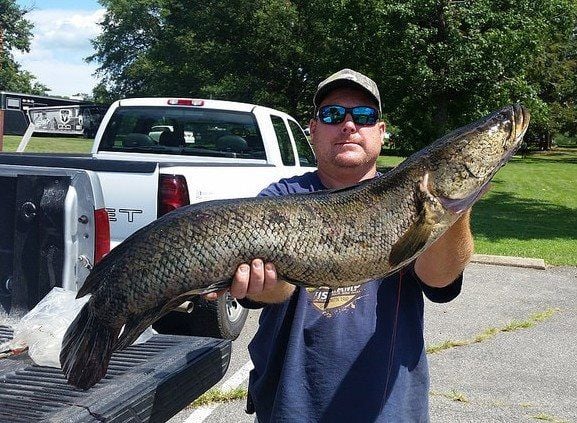
Then drop on the fillets - and stand back. Heat an iron skillet until hot enough that a drop of butter placed on it sizzles and boils the moment it hits. Liberally coat all portions of the fillets and allow the butter/spice mix to solidify on the chilled fillets. each of cayenne pepper, black pepper, and crushed red pepper In either case, you may want to give the neighbors a heads-up before proceeding, lest they come rushing over with a fire extinguisher.įor every 2 pounds of blue catfish fillets (feeds up to four), melt a half stick of butter, then mix in:ġ tsp.
Snakehead fish nc windows#
Warning: Either try this outside on a griddle heated by the grill, or be sure to open all your windows and remove the batteries from your smoke alarms before attempting this recipe. The state legislature and the Department of Agriculture have worked to make blue catfish more accessible to watermen, and the stated goal of the Chesapeake Bay Program's invasive catfish management strategy is to "reduce the fish's abundance and mitigate its spread." It's time we anglers all grab a rod, pitch in, and help.īanned From The Kitchen: Blackened Blue Catfish
Snakehead fish nc how to#
Today, the Maryland Department of Natural Resources encourages anglers to pursue and keep blue cats wherever they find them, and it even produces weekly fishing reports which usually offer plenty of advice on where and how to catch them. So much so that they're now in every tributary river system connected to the Chesapeake. The salinity in the Chesapeake, however, can vary quite a bit, and during years of heavy rainfall, the blue cats began to roam.

For decades, anglers enjoyed catching these creatures, which seemed to double in size and number at a blindingly rapid pace, while everyone believed them to be held prisoner in those waterways by the salty waters of Chesapeake Bay. As is often the case, however, when they escape into areas they were never meant to be, they can create havoc.īlue cats were intentionally released into the James, York, and Rappahannock rivers in the 1970s and '80s to establish a new recreational fishery, a move once thought to be a smashing success. Since they make good table fare and grow astonishingly large - the world record is a 143-pounder caught in Virginia - many anglers consider them worthy opponents. Native to the Mississippi, Missouri, Ohio, and Rio Grande river basins, the blue catfish has been stocked in many different areas of the nation as a sportfish. Thanks to that crazy leaping ability and their prolific numbers, it's not unusual for the carp to jump right in a moving boat, and some crafty carp hunters have taken to cruising down the river armed with hoop nets, scooping them right out of the air then depositing them in a cooler. That doesn't mean, however, you can't go "fishing" for them. Unfortunately for anglers, as these fish are filter feeders, they won't take baits or lures. Unlike many other carp species, silver carp live on a diet of plankton, which gives them a firm white meat that's said to be quite tasty (although they do have numerous small bones and must be deboned or prepared in ways similar to shad or other bony fish). A running boat often triggers such behavior, and at some times in some places, it's common for hundreds of these fish to leap out of the water all around a boat as it cruises down the river. An unusual trait of these fish is that they jump out of the water in a rather spectacular fashion, sometimes to 10 feet high, at the slightest provocation.

But it's the silver carp that captures the imagination of those setting out to capture dinner. "Invasive carp" actually refers to four species: bighead, black, grass, and silver carp. Soon after escaping confinement, they became a dominant species in the Mississippi River complex, and many parts of the Missouri and Illinois Rivers. While no one knows exactly how or when they made it from those ponds to the Midwest's river systems, either via flooding or intentional release, the carp began spreading by the 1980s. The appearance of invasive carp in America (recently rebranded "copi" by the Illinois Department of Natural Resources) is a well-documented and much-rued event with roots that can be traced back to the 1970s when they were intentionally imported to the United States to control algae blooms in wastewater treatment plants and aquaculture ponds.

Now that we've whetted your appetite, consider adding these five finned invaders to your menu. Even better, some of the species scientists and authorities would like anglers to catch - and not release - make for a tasty dinner, all while doing the environment a solid. To the angler looking for a challenge, many of these incorrigible intruders also create new fishing opportunities, and a chance to proudly vanquish a few invaders. All across the nation, invasive species cause problems for fisheries, those who manage fisheries, and the environment.


 0 kommentar(er)
0 kommentar(er)
